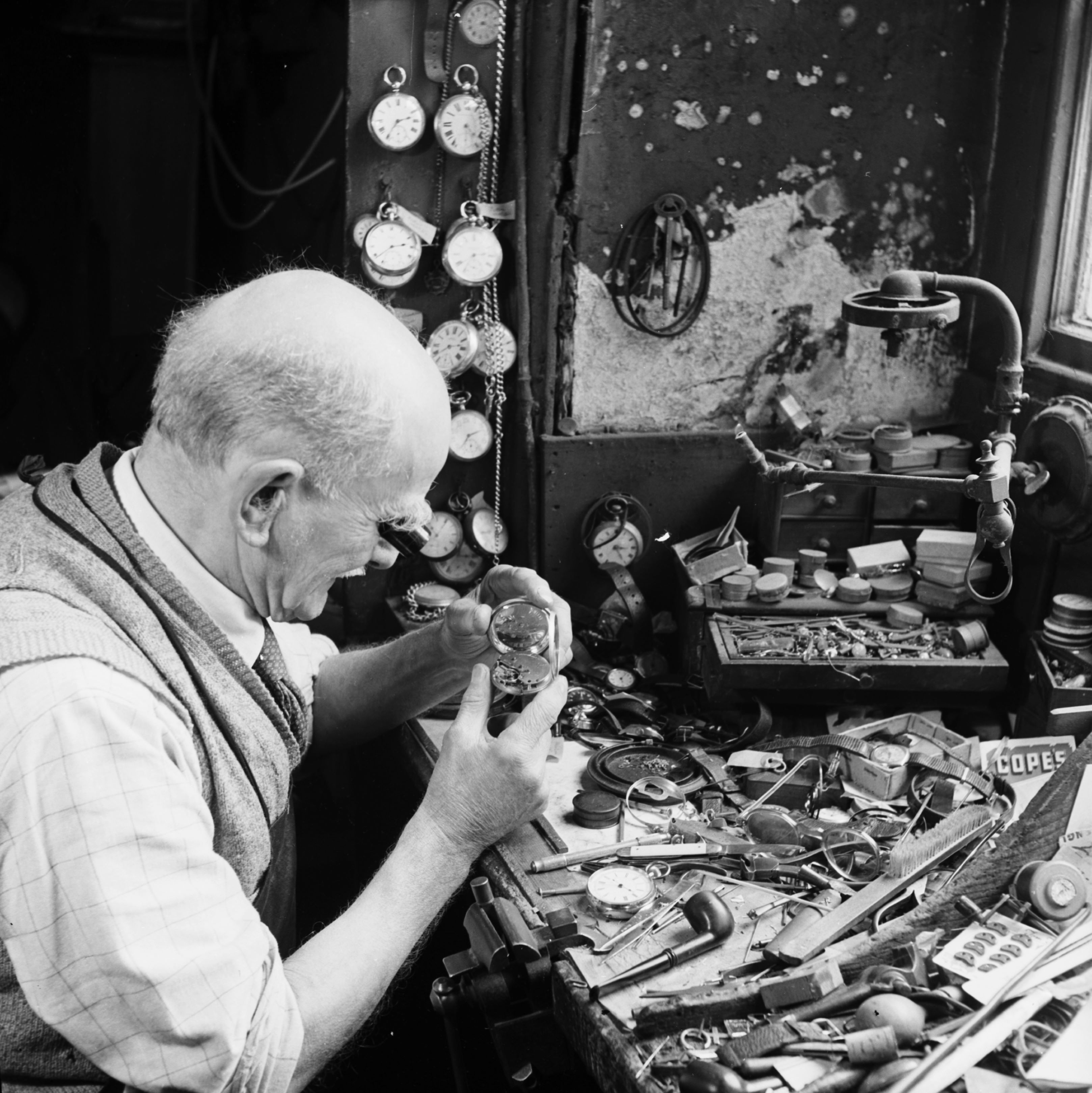Timeless trades inspire hobbies of today
Spring is a season of renewal, a time when many people are inspired to take up new hobbies drawing on the creativity and craftsmanship of the past for inspiration.
Historically, this season marked a period when artisans such as potters, blacksmiths and weavers emerged from their winter’s quiet period to ply their trades, creating essential goods for their communities.
The arrival of milder temperatures not only signified nature’s renewal but also invigorated these craftsmen, whose skills were deeply intertwined with the rhythms of the season.
Historic photographs reveal Mr Curtis, in the village of Littlethorpe near Ripon, busy at his potter’s wheel as he shaped flowerpots in his workshop preparing for the new season’s blooms. Similarly, in Farndale, Thomas Featherstone wove straw skeps, traditional beehives designed to shelter swarms ahead of summer’s honeyflow.
At Hargrave’s of Bondgate in Ripon, saddle-tree makers formed wooden structures for leather saddles, ensuring the region’s equestrian tradition remained strong. In Slaidburn, a village that was originally in the West Riding of Yorkshire but now lies in Lancashire, the local blacksmith’s forge was a hub of activity.
In Kirkbymoorside, Mr E Hill, a skilled watchmaker, assembled finely crafted timepieces surrounded by an array of specialised tools and spare parts.
Meanwhile, In York, Martin Dutton, a woodcarver apprenticed to the renowned ‘Mouseman’ Robert Thompson of Kilburn, dedicated his skills to creating intricate carvings many of which adorned local churches. Jack Lister was busy in Grassington gathering twigs to craft brooms for sweeping away the debris of winter. In Hawes, Mr Grainger fashioned wooden-soled clogs, a sturdy alternative to leather shoes.
All these crafts, deeply woven into North Yorkshire’s history, endure as reminders of patience, skill, and heritage. Even documents such as the 1764 apprenticeship indenture of Simon Watson, training as a linen weaver, reveal a tradition of learning and dedication. As spring breathes new life into the countryside, the legacies of these craftsmen continue to inspire.
There are more than 6,500 archive images available at the County Record Office – where you can browse the collection or buy photos.
If you have any further information about any of the images on this page, our archivists would be keen to hear about it. Please email yny@northyorks.gov.uk

Mr Curtis, a potter from the village of Littlethorpe, throwing a flowerpot in his workshop. From the Bertram Unné photographic collection.

Thomas Featherstone in his Farndale workshop creating a skep. A skep is a traditional straw beehive for collecting honey and wax from bees. From the Bertram Unné photographic collection.

Saddle-tree makers at Hargrave’s of Bondgate, Ripon. The wooden forms are used to shape leather saddles. This image is part of the Ripon Re-Viewed collection created by Ripon Civic Society and supported by the National Lottery Heritage Fund (NLHF).

Inside the blacksmith’s at Slaidburn. From the Bertram Unné photographic collection.

Mr E. Hill, watchmaker of Kirkbymoorside, creates another finely crafted watch, surrounded by a collection of tools and spare parts. From the Bertram Unné photographic collection.

Martin Dutton, woodcarver of York, who was apprenticed for 12 years to ‘Mouseman’ Robert Thompson of Kilburn. Most of his carved pieces were for local churches. From the Bertram Unné photographic collection.

Besom-maker Jack Lister of Woodside, Grassington, who made brooms from the birch twigs he collected locally. From the Bertram Unné photographic collection.

A stonemason at work, carving a gargoyle for Ripon Cathedral. This image is part of the Ripon Re-Viewed collection created by Ripon Civic Society and supported by the National Lottery Heritage Fund (NLHF).

Award-winning harness-maker Jim Bousfield. He worked in Harrogate with his cousin, and owner of the business, Mr Thomas J Brown. The pair were in business until their retirement in 1951.

Clog maker Mr Grainger busy in his workshop in Hawes. Traditional footwear, wooden-soled clogs were gradually replaced over time by leather shoes.

An apprenticeship indenture, whereby Simon Watson of Danby Wiske is apprenticed for seven years to John Jackson, linen weaver, at Brompton near Northallerton. Dated 16 October 1764. From the Cust of Danby Wiske family archive.
